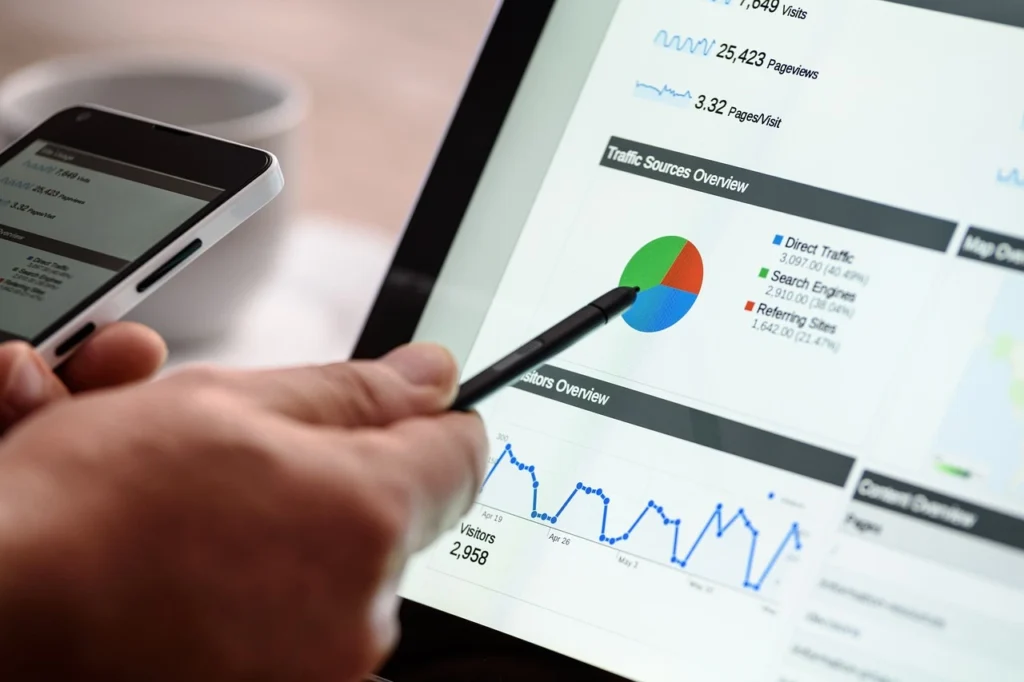If you’ve ever walked into a store and found yourself drawn to a product you weren’t planning to buy, converting shoppers to buyers: the power of shopper marketing and promotions made you experience it. But what exactly is it, and how can businesses use it to boost conversions?
In recent retail, understanding and implementing effective tactics can make all the difference in driving conversions and boosting brand loyalty. With U.S. retail sales reached $7.48 trillion in 2023, the competition was fiercer than ever.
What is Shopper Marketing?
At its core, shopper marketing influences consumers’ purchasing decisions at the point of sale, whether in a physical store or online. According to the latest definition, it’s a strategic blend of in-store tactics and digital initiatives to maximize conversions.
Why Shopper Marketing Matters?
With online grocery sales projected to grow by 40% in 2025, the need for businesses to refine their shopper engagement tactics has never been greater. Brands that prioritize shopper marketing tactics can significantly enhance their sales performance and customer retention rates.
Current Retail Trends and Consumer Insights
Staying up-to-date with the latest trends is essential for successful shopper marketing strategies. Here are some key insights:
The U.S. retail sector grew by 3.0% in 2024 and is expected to reach $729.2 billion in 2025.
Mobile commerce accounted for 43.4% of eCommerce sales in 2023, emphasizing the need for mobile-friendly marketing strategies.
With economic pressures, 81% of grocery shoppers compare prices across stores before purchasing.
Key Shopper Marketing Tactics to Drive Sales

You need the right tactics to sell more products and attract more customers. These tactics help businesses influence shoppers at the right moment—when they are thinking about buying. Here are some simple and effective ways to increase sales with secret shop and make your brand stand out.
1. Personalize the Shopping Experience
Customers love feeling special. Personalization means giving shoppers what they want based on their interests and past behavior. With 71% of customers expecting personalized experiences, making your marketing efforts is crucial.
How to do it:
- Use customer data to suggest products they might like.
- Offer personalized discounts based on previous purchases.
- Send emails or SMS messages with special deals just for them.
2. Use Digital Shopper Marketing to Connect Online
Most people shop online today, and social media is a huge influence. In 2023, social commerce sales in the U.S. hit $75.6 billion, showing how important it is to market your products online.
How to do it:
- Advertise on platforms like Instagram, Facebook, and TikTok, where people spend their time.
- Partner with influencers to promote your products authentically.
- Run digital promotions, such as limited-time offers on your website or app.
3. Create Eye-Catching In-Store Displays
If you sell products in physical stores, how your products look on the shelf can make a big difference. Well-designed displays can attract attention and convince shoppers to buy on impulse.
How to do it:
- Use bright colors and creative signage to grab attention.
- Place best-selling or promotional products at eye level.
- Use interactive elements like QR codes that provide more product information.
4. Offer Special Discounts and Promotions
Everyone loves a good deal! Discounts and promotions encourage shoppers to buy more and try new products. Limited-time offers create a sense of urgency that pushes customers to make quick decisions.
How to do it:
- Run “Buy One, Get One Free” (BOGO) deals to increase sales volume.
- Offer discounts on bulk purchases to encourage larger orders.
- Introduce loyalty programs where shoppers earn rewards for repeated purchases.
5. Use Data to Understand Your Shoppers
Knowing your customers well can help you make better marketing decisions. Today, technology allows you to collect data about what customers buy, when, and how often they shop.
How to do it:
- Analyze past sales data to see which products are most popular.
- Conduct surveys or ask for feedback to understand what customers like or dislike.
- Track online behavior to see which pages shoppers visit most on your website.
6. Improve Your Mobile Marketing Efforts
Since 43.4% of retail sales in 2023 came from mobile shopping, having a strong mobile marketing strategy is crucial. Many customers browse and shop directly from their phones.
How to do it:
- Ensure your website is mobile-friendly with easy navigation.
- Send push notifications with exclusive deals to mobile app users.
- Use location-based marketing to send offers when shoppers are near your store.
7. Embrace Omnichannel Shopping
Today, customers shop in many ways—online, in-store, apps, and social media. Seventy percent of U.S. consumers engage in online and offline shopping, meaning they expect a smooth experience across all platforms.
How to do it:
- Ensure your website, app, and store provide the same promotions and pricing.
- Offer “buy online, pick up in-store” (BOPIS) options for convenience.
- Provide excellent customer service across all channels to ensure a consistent experience.
8. Partner with Retailers for In-Store Promotions
Working with retailers can increase your brand’s visibility and placement in stores. Retailers can also help you run promotions that attract customers and boost sales.
How to do it:
- Collaborate on in-store events, such as product demonstrations or tastings.
- Work together on seasonal promotions to attract more shoppers.
- Align your marketing goals with the retailer’s strategy to ensure mutual success.
9. Provide Engaging Content and Product Information
Shoppers like to research products before making a decision. Providing helpful and engaging content can make them feel more confident about their purchase.
How to do it:
- Create product videos showing how to use your items.
- Write blog posts or guides that answer common questions about your products.
- Use customer reviews and testimonials to build trust.
10. Test and Improve Your Marketing Efforts
A great marketing strategy isn’t set in stone. It’s essential to constantly test different tactics and adjust based on what works best.
How to do it:
- Run A/B tests to see which promotions or ad formats work better.
- Track key performance indicators (KPIs) like sales, customer engagement, and conversion rates.
- Adjust your approach based on the data you collect to improve future campaigns.

Best Shopper Marketing Campaigns for Inspiration
Here are some of the best campaigns that have successfully leveraged modern trends:
By integrating mobile checkout systems, Walmart has made shopping more convenient, catering to the 43.4% of shoppers who rely on mobile commerce.
This campaign tapped into the rising demand for personalization and drove a significant boost in sales.
Amazon’s data-driven approach has revolutionized eCommerce by offering highly personalized shopping experiences.
The Role of Shopper Marketing Agencies
Benefits of Working with Shopper Marketing Agencies:
- Expert strategy development for your audience.
- Access to cutting-edge examples and success models.
- Advanced reporting tools to measure campaign effectiveness.
Future of Shopper Marketing: Trends to Watch
Looking ahead, several emerging trends will shape its future, including:
1. AR/VR Integration:
The AR/VR retail sector is expected to reach $1.6 billion by 2025, offering immersive shopping experiences that blend digital and physical worlds.
2. Growth of Social Commerce:
Global social commerce sales are projected to hit $700 billion in 2024, a 23% increase from the previous year. This highlights the power of social media in shopper marketing.
3. Personalization Through AI:
AI is set to revolutionize the industry, providing hyper-personalized experiences and predictive analytics that enhance customer engagement.
Shopper Marketing Jobs Overview
As the demand for targeted retail marketing continues to rise, these jobs are becoming more sought after, offering exciting career prospects for professionals in the field.

This growth presents ample opportunities for individuals looking to enter or advance within the field.
Current Employment Trends in Shopper Marketing
Despite the promising outlook, securing a job isn’t without its challenges. According to recent data:
- 68% of marketers believe it is more difficult to land a job now than five years ago.
- 75% of professionals attribute this difficulty to the financial pressures faced by companies, which lead to fewer available positions and increased competition.
- Around 69% of marketers report intense competition for job openings remains a significant concern.
Shopper Marketing Salary Trends
Understanding salary expectations is crucial for anyone considering a career in shopper marketing. As of January 2025, the average hourly wage for these roles in the U.S. is approximately $39.57, which translates to a competitive annual salary.
However, there has been a slight decline in overall marketing salaries:
- The average annual salary for marketing professionals is $108,380, marking a 3% decrease from the previous year.
- Despite this, many professionals feel they should earn about 20% more than their current compensation, indicating a growing demand for better pay structures within the industry.
Demographics of Marketing Professionals
The field of shopper marketing jobs attracts a diverse group of professionals, with recent statistics showing:
- 78% of marketing professionals identify as women, while 22% identify as men.
- Regarding generational distribution, 55% are millennials, followed by 31% from Gen X, 10% from Gen Z, and 5% from Baby Boomers.
- These numbers highlight an experienced and evolving workforce, with millennials shaping the future of shopper marketing.
Skills and Training Needs in Shopper Marketing
Professionals must adapt and develop specialized skills to stay competitive in the evolving marketing landscape. Notably:
- 75% of marketers believe mastering specialized skills is essential to remain relevant, particularly as AI and automation continue to reshape the industry.
- However, only 35% of professionals feel that their current training programs adequately meet their career needs, pointing to a significant gap in professional development opportunities.
Career Opportunities in Shopper Marketing
With the rapid expansion of digital platforms and omnichannel retailing, the demand for skilled shopper marketing professionals is rising. Some of the most in-demand roles include:
- Shopper Marketing Manager: Responsible for developing and executing marketing campaigns that influence purchase behavior at the point of sale.
- Digital Shopper Marketing Specialist: This position focuses on engaging shoppers through digital channels such as social media, mobile marketing, and influencer collaborations.
- Consumer Insights Analyst: Gathers and interprets shopper data to provide actionable insights for improving marketing strategies.
- Retail Marketing Coordinator: Works closely with retailers to align brand strategies with in-store promotions and experiences.
FAQs
1. What is shopper marketing?
Shopper marketing focuses on influencing consumers at the point of purchase by using strategies to boost online and in-store conversions.
2. How can brands use digital shopper marketing effectively?
Brands can engage customers through targeted ads, personalized content, and social media platforms like Instagram, where young adults prefer to shop.
3. What are some common shopper marketing tactics?
Tactics include in-store promotions, personalized email campaigns, and influencer collaborations to reach potential customers.
4. Are shopper marketing jobs in demand?
Yes! With the growth of eCommerce, positions in shopper marketing jobs such as digital marketing specialists and shopper insights analysts are on the rise.











